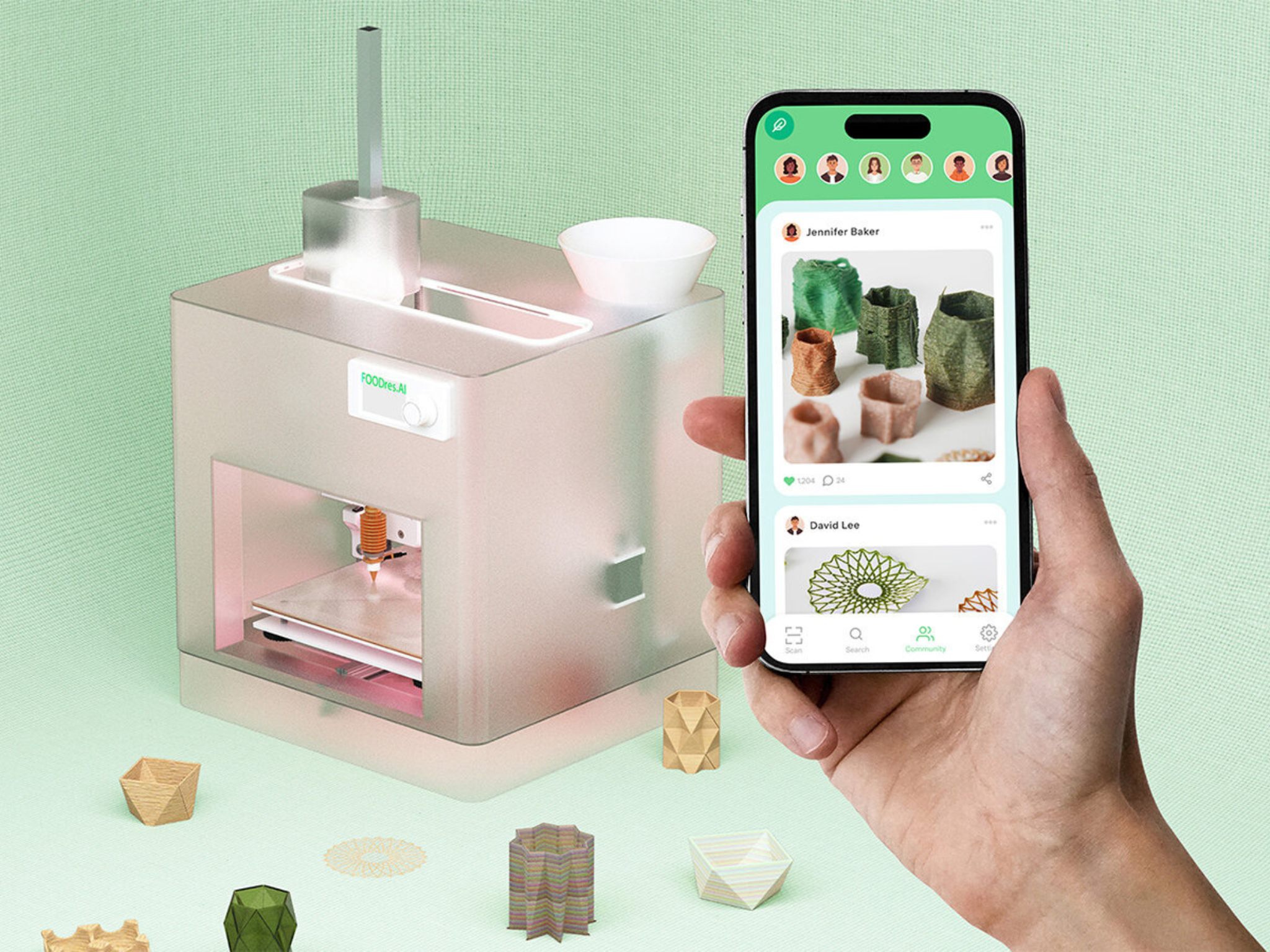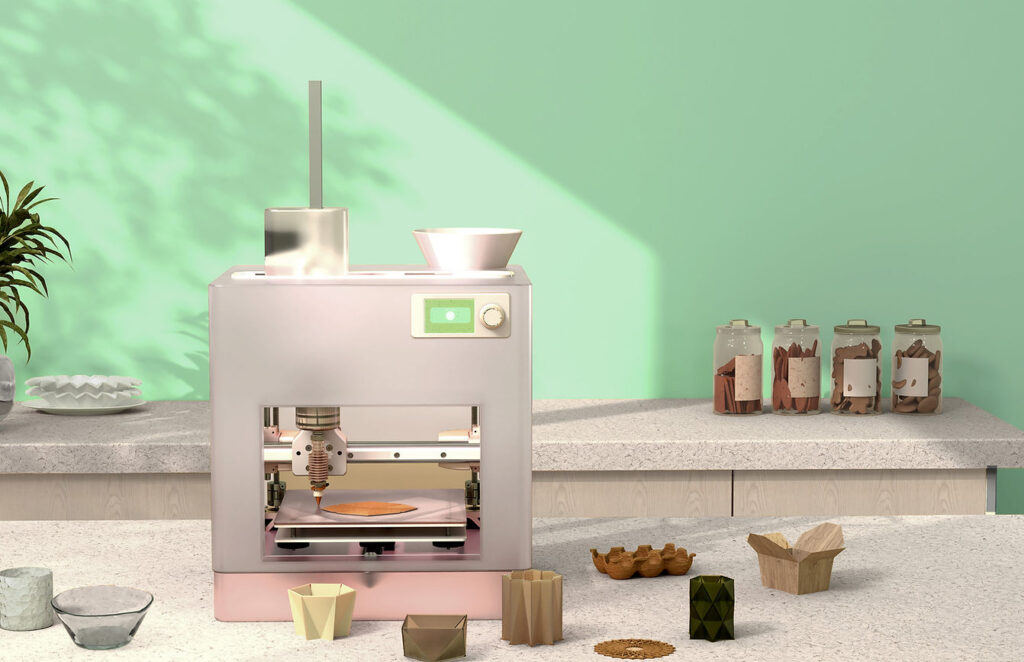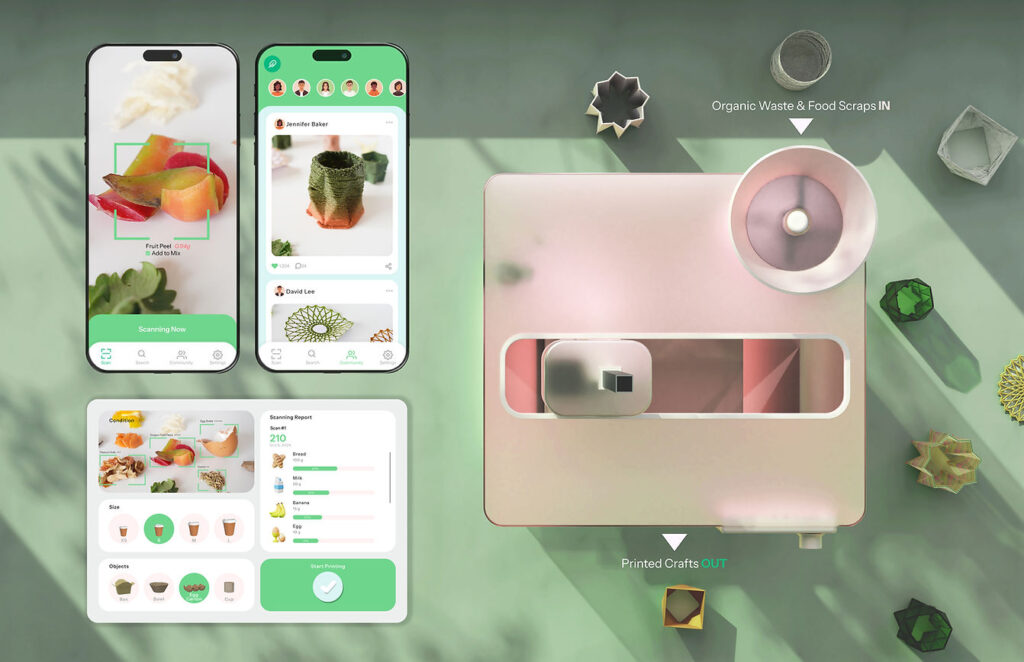
Two MIT graduates have developed an AI-powered 3D printer that converts household food waste into functional objects like cup holders, coasters, and decorative items.
What if you could use your espresso grounds to make a coaster for your next cup of coffee?
Turning that idea into reality is a new desktop 3D printer developed by Massachusetts Institute of Technology (MIT) graduates Biru Cao and Qiqing Wang, which uses artificial intelligence (AI) to convert kitchen scraps into dining table accessories and home decorations.
The Foodres.Ai Printer processes household food waste into printable bioplastic pastes via an internal heating and mixing mechanism, enabling home users to access this 3D printing technique without professional expertise.
In the US, households are the biggest contributor to food waste (accounting for 35% of the total). This innovation allows consumers to take action and upcycle waste into creative objects for their homes.

How 3D printing converts food waste into useful materials
The printer features a small-scale, circular design and integrates object recognition, material processing, and additive manufacturing technologies.
Here’s how it works: users place the food waste into the printer, and a companion mobile app uses AI to analyse the food items through the phone’s camera. The object detection model identifies the food types and suggests built-in recipes that suit their physical properties.
In the single-click operation, the 3D printer’s material processing module then mixes the waste with natural additives to form a paste, which is fed into a three-axis extruder system with automated heating and material refill capabilities.
The app provides the user with a range of pre-selected objects to print, including coasters, containers, cup holders, and household decorations.
The printer also supports advanced customisations, allowing the users to upload custom models and mix materials for different colours and textures, while AI-assisted adjustments ensure that print quality maintains its integrity.
Foodres.AI won the iF Design Award 2025 and was the Platinum Winner in the 2025 A’ Design Award’s Social Design category.
It came about as part of MIT’s Ideas Social Innovation Challenge. Prior to this, Cao and Wang were working on reducing food waste in grocery stores using computer vision technology, in a project backed by an MIT MAD mini-grant.

Foodres.AI gives consumers the power to upcycle food waste at home
“We utilised 3D scanning and computer vision to conduct precise data analysis on food piles, including their volume and weight. Our streamlined workflow allowed us to visualize the condition of the piles, potentially saving more food from ending up in landfills,” Wang said last year, explaining the-focused effort.
“Our next plan is to further apply and transfer this model to food waste, which presents a more complicated scenario. We aim to provide precise data analysis so that the model can identify waste items and assess the level of freshness within food waste piles in real time,” she added.
It presents a solution to a major climate issue: food waste. In the US, 31% of all food goes to waste, creating economic losses worth $382B (or 1.4% of the national GDP). In 2023, the country’s food waste reached a four-year high, accounting for 4% of its greenhouse gas emissions, and resulting in 120 billion lost meals, enough to feed a third of the population for a year.

“Between uneaten groceries and restaurant plate waste, consumers waste nearly 35 million tons of food annually, costing them nearly $800 per person,” Sara Burnett, executive director of non-profit ReFED, told Green Queen earlier this year. “Raising consumers’ awareness about how much food they waste and how to manage it more effectively could significantly reduce household food waste.”
Instead of sending household food waste to landfill or limiting management to compost, FoodRes.AI allows consumers to experiment with new mitigation methods through its user-friendly, modular design. It helps push forward behavioural change, with people directly interacting with food waste and repurposing it into materials they can then decorate their homes with.
The post This AI-Led 3D Printer Turns Food Waste Into Everyday Objects appeared first on Green Queen.
This post was originally published on Green Queen.